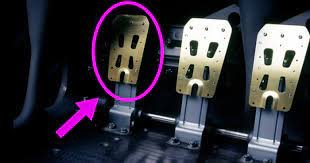HOW TO USE CLUTCH IN CAR
To expand the existence of your grip pedal and the whole grasp framework, you ought to follow these practices:

Smooth Shifting:
While changing gears, do so without a hitch and without inordinate power. Stay away from sudden or forceful grasp commitment, as this can cause superfluous mileage.
Table of Contents
ToggleProper Gear Selection:
Ensure you’re in the right stuff for your speed and driving circumstances. Stay away from “riding” the grasp by to some degree drawing in it while driving; this causes pointless wear.
Avoid Resting Your Foot on the Clutch:
Try not to lay your foot on the grasp pedal while driving. Indeed, even slight strain can make the grip connect somewhat and create intensity and wear.
Use the Handbrake on Hills:
At the point when left on a grade, utilize the handbrake (leaving brake) to keep the heaviness of the vehicle from laying on the grasp.
Avoid Slipping the Clutch:
Limit grip slipping, which is the point at which you somewhat draw in the grasp while driving, for example, when you’re stranded in rush hour gridlock. Attempt to keep the grasp completely drew in or separated when fitting.
Gradual Release:
While beginning from a stop, discharge the grip pedal slowly. Try not to “dump” or delivery it excessively fast, as this can prompt unreasonable wear and slowing down.
Rev Match Downshifts:
When downshifting, practice fire up matching by blipping the choke to coordinate the motor speed with the lower gear. This diminishes the shock on the grip and gearbox.
Clutch Replacement:
On the off chance that you notice indications of grasp wear, for example, slipping, crushing, or trouble moving, have the grip framework assessed and, if fundamental, supplanted quickly to forestall further harm.
Regular Maintenance:
Follow the producer’s suggested support plan for your vehicle. Consistently check and keep up with the grip pressure driven framework and related parts.
Proper Clutch Pedal Adjustment:
Guarantee that the grip pedal free play and commitment point are set by the producer’s determinations. A mistakenly changed grasp can cause untimely wear.
Avoid Excessive Idling:
Delayed standing by with the grip pedal drew in can cause pointless wear. Switch off the motor on the off chance that you hope to be fixed for a drawn out period.
By following these practices, you can assist with guaranteeing a more drawn out life for your grip pedal and the whole grasp framework. Legitimate driving propensities and standard support will go far in safeguarding the grip’s usefulness and forestalling untimely wear and substitution.
You can determine if your car's clutch plate needs to be replaced by paying attention to the following signs and symptoms:
Slipping Clutch:
If you notice that the engine revs increase without a corresponding increase in vehicle speed when you accelerate, it could be a sign of a slipping clutch. This means the clutch plate isn’t engaging properly.
Difficulty Shifting Gears:
If you find it challenging to shift gears, especially when the engine is running, it may indicate clutch issues. Grinding or resistance when shifting can be a sign of a worn clutch.
Strange Noises:
Unusual noises, such as grinding, squeaking, or chirping sounds when you press the clutch pedal, can be an indication of clutch problems.
Vibration or Jerking:
A vibrating or jerking sensation when you release the clutch pedal may be a sign of clutch wear and tear.
Burning Smell:
A burning smell, similar to that of burnt toast, may occur when the clutch is slipping excessively. This can be a result of excessive friction and overheating.
Clutch Pedal Feel:
If the clutch pedal feels soft, spongy, or doesn’t return to its normal position smoothly, it could be due to a worn clutch plate or hydraulic issues.
Mileage and Maintenance Records:
If your vehicle has reached a high mileage, or if you have no record of clutch replacement in a long time, it’s a good idea to consider clutch replacement as part of routine maintenance.
If you experience several of these symptoms, it’s likely that your clutch plate is in need of replacement. However, diagnosing clutch issues accurately often requires the expertise of a qualified mechanic. They can conduct a thorough inspection and provide a definitive assessment of your clutch’s condition.
